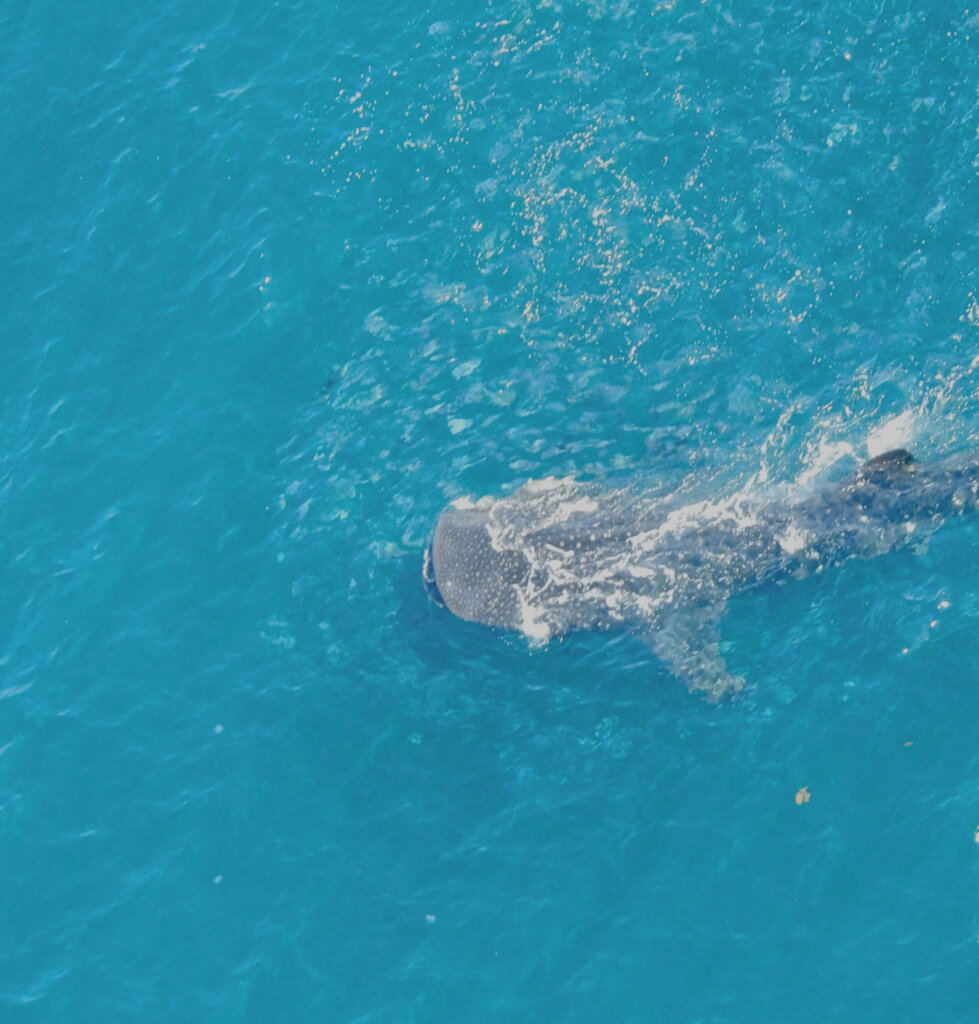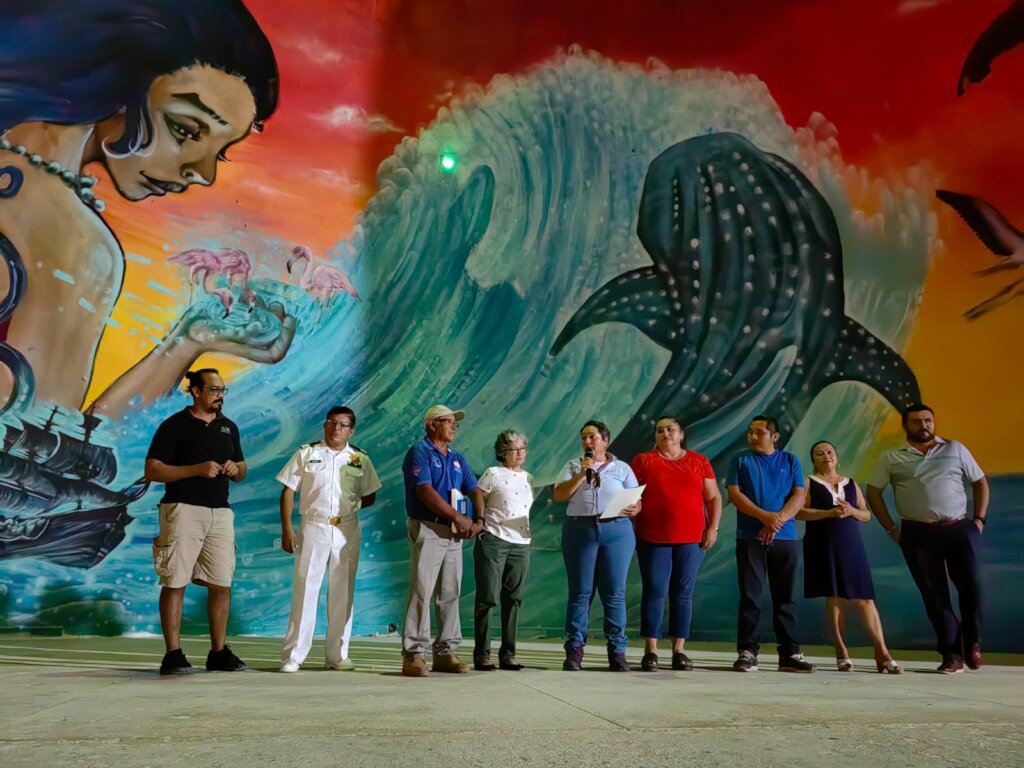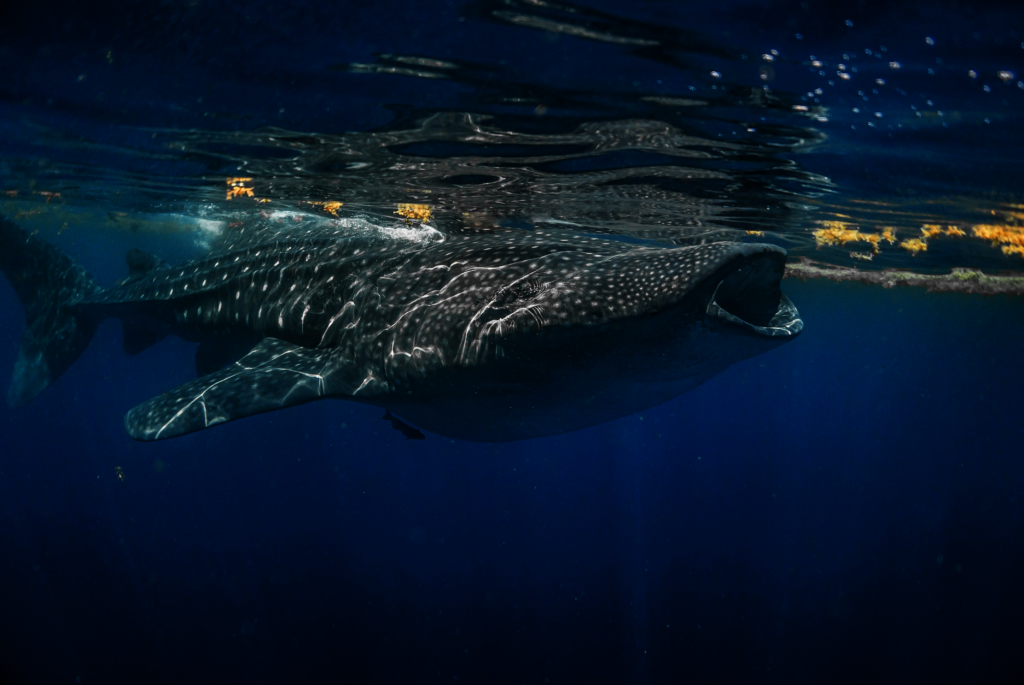By Emanuel Mimila Herrera | Project manager
We are happy to share with you the results of the joint efforts in whale shark conservation, reached in 2024. Thanks to the teamwork with you and GlobalGiving, we have made significant progress that fills us with hope.
After reviewing, organizing, and analyzing the information we obtained during the last whale shark sighting season in the Mexican Caribbean, we know the average number of whale sharks observed in 2024 was 30 organisms, twice as many as we registered in 2023. Although we are still far from observing the hundred whale sharks we used to record in previous years, it is a reality that an increase in the number of sharks from one year to the next is a good sign for the species, but also for the people who depend economically on tourism with whale sharks to support their families. Another good news was that zooplankton samples collected in the whale shark feeding area during 2024 revealed an increase in their food abundance. The average zooplankton biomass in 2024 was almost 4,000 mg/m3, but is this a lot? This amount is the highest recorded since 2017, which is good news because the abundance of food is closely related to the number of whale sharks. If these conditions continue, we could perhaps see a greater number of whale sharks in 2025.
However, it is not all good news. For the second consecutive year, our sea temperature measurements are the highest in the 16 years we have been studying whale shark habitat in the northeastern area of the Mexican Caribbean. In August, the sea temperature exceeded 30°C, something never seen before. Scientists mention that the tolerance range of whale sharks in water temperature is 22-30°C, which makes us wonder what would happen to whale sharks if the temperature continues to rise? Global warming is a real problem, and its effects are visible in many environments on the planet.
During the 2024 season, we recorded the presence of groups of more than 10 whale sharks feeding in the waters north of the Yucatan Peninsula, between Contoy Island and Holbox Island. For several years, we have not registered whale sharks' presence in this area, so seeing them there again is an interesting record. In addition, thanks to aerial surveys we could record that these sharks were swimming through school fish while they were feeding on them. Although this behavior has been seen in other parts of the world, there are no records of that in the Mexican Caribbean. We have already written a scientific note about it, and once it is published, we will share it with you.
We have begun coordination with the local tourism operators and authorities responsible for whale shark management to prepare for the next swimming season with whale sharks in 2025. We have good expectations for their arrival next May. In the meantime, we are working to develop a respectful, educational tourist activity that helps in the conservation of this noble species. We hope to continue counting on your support because it is thanks to you that these achievements become a reality.
Project reports on GlobalGiving are posted directly to globalgiving.org by Project Leaders as they are completed, generally every 3-4 months. To protect the integrity of these documents, GlobalGiving does not alter them; therefore you may find some language or formatting issues.
If you donate to this project or have donated to this project, you can receive an email when this project posts a report. You can also subscribe for reports without donating.
Support this important cause by creating a personalized fundraising page.
Start a Fundraiser


